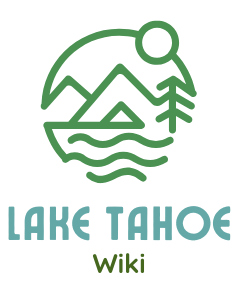Lake Tahoe boat check stations are crucial inspection points designed to prevent the spread of aquatic invasive species. These stations are strategically located around the lake, operating seasonally to ensure all watercraft are thoroughly examined before entering the pristine waters. Boaters must undergo a rigorous inspection process, which includes cleaning, draining, and drying their vessels. This guide provides comprehensive information on locations, procedures, and regulations for Lake Tahoe boat check stations.
Where Are Lake Tahoe Boat Check Stations Located?

Lake Tahoe boat check stations are strategically positioned near major boat launch sites to ensure comprehensive coverage. Here are the primary locations:
- Lake Forest Launch Ramp (near Tahoe City)
- Cave Rock Launch Ramp (eastern shore, near Stateline, NV)
- Sand Harbor
- Kings Beach
- Baldwin Beach
For the most up-to-date information on exact locations and GPS coordinates, it’s recommended to check the official Tahoe Boating website or use the Tahoe Boating app.
What Is the Inspection Process at Lake Tahoe Boat Check Stations?

The inspection process at Lake Tahoe boat check stations is thorough and designed to prevent the introduction of aquatic invasive species. Here’s a step-by-step breakdown:
- Pre-Inspection Preparation:
- Clean your watercraft thoroughly
- Drain all water from the vessel
-
Dry the boat completely
-
Arrival at Inspection Station:
- Present your watercraft for inspection
-
Provide necessary documentation
-
Inspection Steps:
- Visual examination of hull, propeller, and other areas
- Engine flush (for certain boat types)
-
Check of bilge water, live wells, and other compartments
-
Post-Inspection:
- Receive a sticker upon successful inspection
-
Obtain a tongue chain for your trailer
-
Launch Approval:
- Only launch your boat after completing the inspection and receiving approval
Why Are Lake Tahoe Boat Check Stations Necessary?
Lake Tahoe boat check stations play a vital role in preserving the lake’s ecosystem. Here’s why they are essential:
- Prevention of Aquatic Invasive Species (AIS):
- Quagga mussels
- Zebra mussels
- New Zealand mudsnails
-
Golden mussels (recently detected)
-
Protection of Lake Tahoe’s Ecosystem:
- Maintain water clarity
- Preserve native species
-
Prevent ecological imbalance
-
Economic Importance:
- Safeguard tourism industry
- Protect property values around the lake
- Avoid costly AIS removal efforts
When Do Lake Tahoe Boat Check Stations Operate?
The operational hours of Lake Tahoe boat check stations vary depending on the season and location. Here’s a general overview:
| Season | Operational Stations | Hours |
|---|---|---|
| Oct 1 – Apr 30 | Lake Forest and Cave Rock | Weather permitting (check website) |
| May 1 – Sep 30 | All stations | Extended hours (check website) |
Note: It’s crucial to verify the exact hours of operation before planning your trip. You can find this information on the official website or by following @TahoeBoating on social media.
How Can Boaters Prepare for Lake Tahoe Boat Check Stations?
To ensure a smooth inspection process at Lake Tahoe boat check stations, follow these preparation tips:
- Clean your boat thoroughly before arrival
- Drain all water from your watercraft
- Dry your boat completely
- Make a reservation for inspection (highly recommended)
- Arrive early, especially during peak seasons
- Bring all necessary documentation
- Be prepared for potential decontamination procedures
- Stay informed about current regulations and requirements
By following these steps, you can help protect Lake Tahoe’s ecosystem and enjoy a hassle-free boating experience.
What Are the Consequences of Non-Compliance with Lake Tahoe Boat Check Stations?
Failure to comply with Lake Tahoe boat check station requirements can result in serious consequences:
- Legal Penalties:
- Fines for knowingly transporting AIS
-
Potential criminal charges for repeat offenders
-
Environmental Impact:
- Risk of introducing harmful invasive species
-
Damage to Lake Tahoe’s delicate ecosystem
-
Economic Repercussions:
- Increased costs for AIS removal and management
-
Potential decline in tourism and property values
-
Restricted Access:
- Denial of lake access for non-compliant watercraft
- Possible long-term bans for repeat offenders
To avoid these consequences and contribute to the preservation of Lake Tahoe, always adhere to the inspection requirements and regulations set forth by the authorities.
References:
1. Tahoe Boat Inspections
2. Lake Tahoe Boat Inspection
3. Tahoe Boating App
